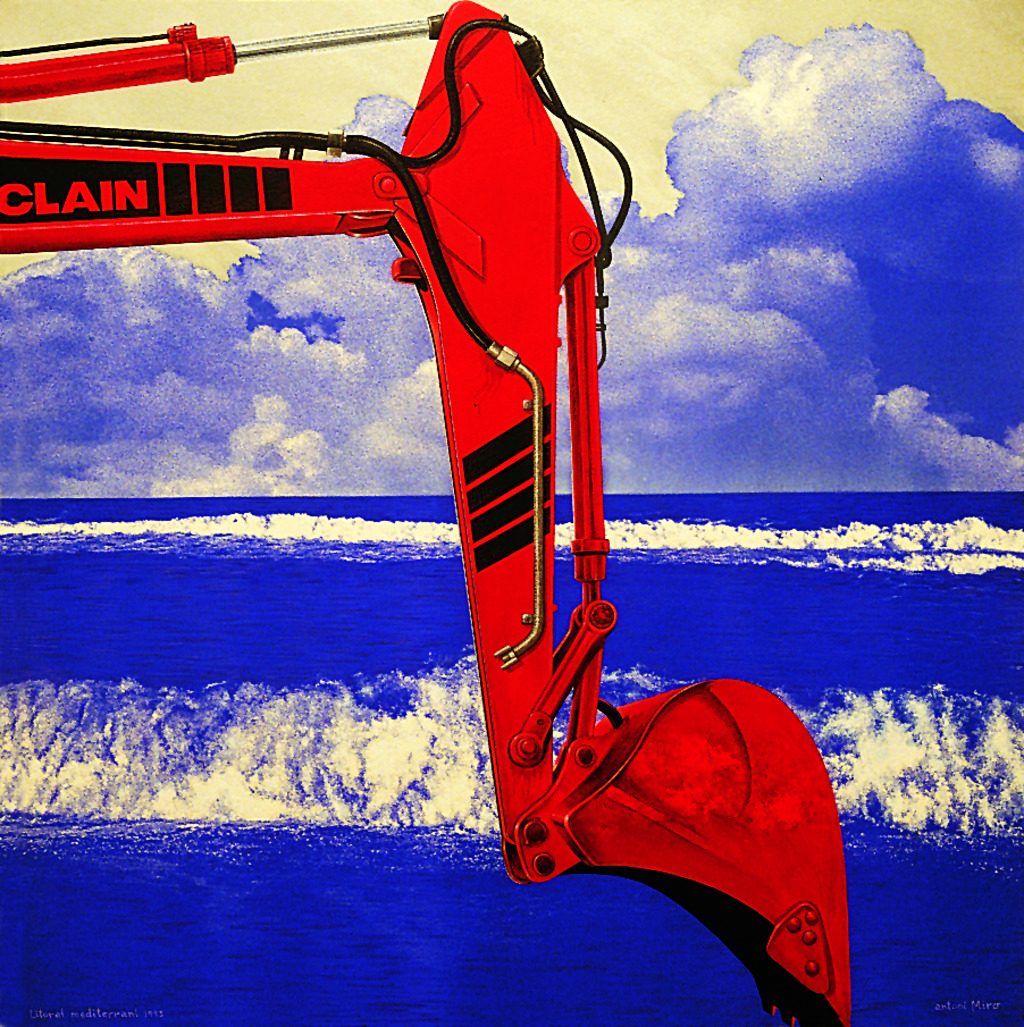Litoral mediterrani (Mediterranean coastline)
As is typical of the “Vivace” series, environmental concerns are manifested in a seemingly non-conflicting way yet nevertheless express heartbreaking criticism. The tension between the superficial appearance of what is depicted and its deeper connotations differentiate these works from those painted by Miró in the 1970s, when no effort was made to sweeten the metaphor.
Iglesias stresses that the “Vivace” series “shows off the highest degree of the artist’s aesthetic conception”. Yet going beyond appearance, the works take on a Surrealist character given that, as Blasco Carrascosa notes, the mechanical “metamorphoses into an illogical world that veers between reality and fantasy”.
There was a property boom in Spain from the mid-80s to the early 90s. Housing developments were thrown up in almost every town on the Mediterranean coast, with municipalities teeming with housing estates full of single-family homes.
Antoni Miró knows our coastal geography well, especially that of Girona and Alacant. This building spree was less pronounced in Girona’s case but was blatantly obvious in Alacant. The obsession with economic development in the 1960s had already ruined much of the traditional setting and environment of many seaside towns and villages, but this second wave of property speculation had a broader destructive impact.
This strip of Mediterranean coastline was under unremitting siege back then. The ‘Poclain’ excavator in the picture is self-explanatory. The image treats the digger as a double-edged invention: “a potential liberator from slavery and as a menace to Nature.” We could say, conceptually speaking and under the terms established by the artist in the series, that this machine is the very antithesis of the bicycles, widely used earlier in this same series.
The painting’s compositional simplicity helps press the message home. The picture is split into an upper half (sky) and a lower half (sea). In front of them, an articulated arm of an excavator is ready to break fragile Nature.
It is clear that the submission of the environment requires a technician’s help. That is why we see this machine as a metaphor for all the means of transformation and production under the command of speculation.
Nevertheless, this work seeks to show this act of predation, ironically, with an elegance to it. The protagonist resource is evenly laid throughout the scene. The excavator’s arm, new and clean, is rendered in vibrant red, which contrasts with the blues of the sea and clouds in an opposition of two of the primary colours in the classic triad. The lighter areas of the sky are rendered in clear ochres with a yellow base, balancing the picture by introducing a tone of the third primary colour.
The digger’s mechanical arm seems to hang motionless in front of a sea with smooth but continuous waves and a sky with towering clouds in the distance, over the horizon line. The result is that, as in a collage, the meeting of sea and sky seems unnatural, in spite of the credibility given by their union at the artist’s whim.
Santiago Pastor Vila
